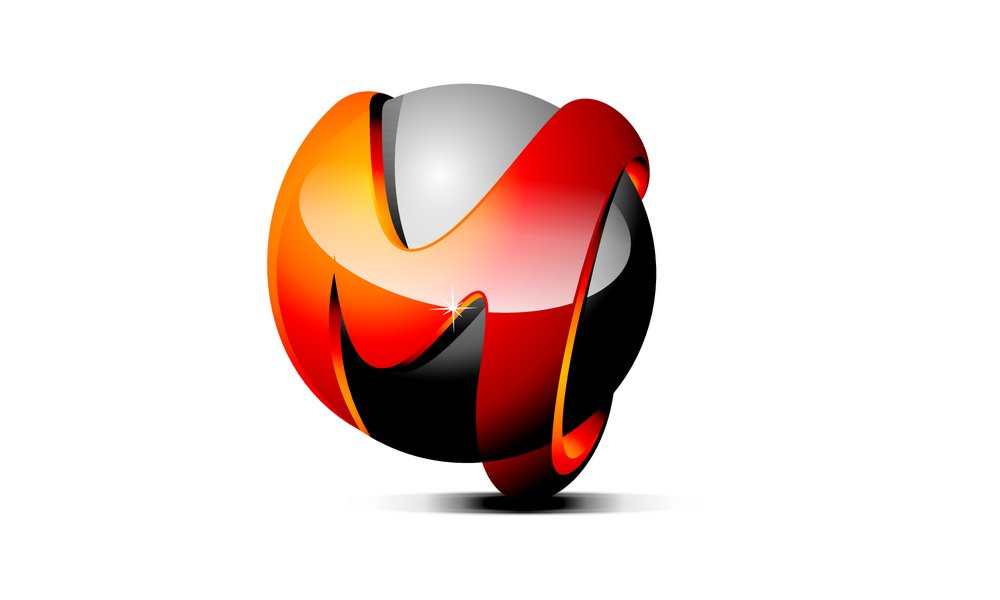Home> Company News> Effect of microwave vacuum freeze-drying on quality characteristics of dried mango products
- AddressNo.4087 SHAHEXI ROAD, TIAOQIAO DISTRICT,JINAN,CHINA
- Factory AddressNo.4087 SHAHEXI ROAD, TIAOQIAO DISTRICT,JINAN,CHINA
- Worktime9:00-18:00
- Phone(Working Time)0531-85064681
- Phone(Nonworking Time)86-18660125156
- Fax0531-85064682
Effect of microwave vacuum freeze-drying on quality characteristics of dried mango products
2018-10-22 13:20:03Abstract: In order to obtain a better method of mango microwave drying equipment, the effects of microwave vacuum freeze drying, hot plate vacuum freeze drying and hot air drying on the quality of dried mango products were compared with the indexes of rehydration and sensory evaluation. The results showed that the indexes of vacuum freeze drying were better than those of hot air drying. Microwave vacuum freeze-drying products had the best rehydration, the maximum rehydration ratios at 25 C and 100 C were 3.363 and 3.674, followed by hot plate vacuum freeze-drying, the difference between the two temperature conditions and microwave vacuum freeze-drying products was small; hot air drying products had the worst rehydration ratios, 2.140 and 3.028, respectively. The color, aroma and taste of the sensory indexes were: microwave vacuum freeze drying > hot plate vacuum freeze drying > hot air drying.
Mango, a perennial woody plant of the genus mango from mango, is a tropical fruit tree with relatively high economic benefits. Mango fruit has beautiful color, aroma and high nutritional value. It is known as "Tropical Fruit King" and has high nutritional value and medical and health care efficacy. In addition to fresh food, can be processed fruit juice, jam, wine, preserves and canned food more than 30 kinds, is a very valuable tropical fruit development. Panzhihua City is located in the valley of about 1400 meters above sea level. It has a dry and hot climate, no typhoon, no mildew and no frost. It is the only suitable area for mango cultivation in Sichuan Province, and one of the few mango cultivation areas in China. The mango matured in September to October, delayed 1 to 2 months than other mango producing areas in China, and dominated the domestic late-maturing mango market. At present, mango in Panzhihua City is mainly used for fresh sale. Because mango is a typical respiratory climacteric fruit, its sugar content is high and it is difficult to store. The market of deep processing of mango is still not developed on a large scale. The problems of mango processing, such as single product, rough processing and preservation technology, low scientific and technological content, and market are expounded. Weak competitiveness. Dried fruit and vegetable processing as the main method of fruit and vegetable processing, rapid development in recent years, export processing growth momentum is obvious. Mango drying equipment can not only improve the economic value-added of mango, extend the mango industry chain, but also enhance the variety of commodities, its production and application prospects are very broad, the market potential is huge.
In the process of fruit and vegetable drying affected by temperature, Maillard reaction occurs and causes browning, so the drying temperature and time is an important factor affecting the color change of fruit and vegetable. Hot air drying and vacuum freeze-drying are common processing methods for food dehydration. Hot air drying is a traditional processing method of dried mango products, which has poor texture characteristics, rehydration and color, and is difficult to be recognized by consumers. Vacuum freeze-drying referred to as freeze-drying, refers to the material completely frozen, and in a certain vacuum conditions to sublimate ice crystals, so as to achieve the purpose of low-temperature dehydration. Microwave vacuum drying, microwave freeze drying and freeze drying were compared. The results showed that microwave freeze drying had the best product quality. From the point of view of product shrinkage, glass transition temperature and kinetics, the hot-air drying and vacuum freeze-drying methods were summarized and evaluated in the food field. It was pointed out that the quality of hot-air drying products was low and the cost of vacuum freeze-drying was high. Show the trend. The rehydration of mango after vacuum freeze-drying was studied. It was pointed out that the rehydration ability of the dried products was related to the rehydration temperature. The effect of microwave vacuum drying on pumpkin slices was studied. The results showed that the higher the temperature and the longer the time of drying, the greater the loss of VC and carotene in the raw materials. The effects of hot air drying, vacuum drying and freeze drying on spinach, water vegetable and carrot were studied. The results showed that vacuum freeze drying was better than hot air drying. It is still blank to report that microwave vacuum drying and microwave freeze drying are combined as a drying method for mango dried products.
In this project, fresh mango in Panzhihua City was used as experimental materials, and the rehydration and sensory evaluation were used as indicators to study the effects of different drying methods on the quality of dried mango products, in order to provide a theoretical basis for the selection of drying methods of mango slices. At present, in the field of vacuum freeze-drying, there is little research on vacuum freeze-drying technology by microwave loading, and the products produced by microwave loading have good quality in rehydration, color, fragrance, etc. The microwave vacuum freeze-drying method has the advantages of low energy consumption, high yield, good product quality, less drying time and so on. Production prospects.
Materials and reagents: fresh Kate mango,
Instruments and equipment: H-MFD-50 microwave vacuum freeze dryer, Wizard 2.0 hot plate vacuum freeze dryer, DHG-9240A electrothermal constant temperature blast dryer, ESJ205-4 electronic balance.
Determination of rehydration ratio of dry products: choose 3 drying methods to determine the rehydration ratio of mango slices. Call dry products 0.5g or so in the beaker. Distilled water at room temperature of 25 C and boiling water at 100 C were selected and treated for 35 times. The setting time of rehydration was as follows: the gradient of 0.25 min increased from 0 to 1 min; the gradient of 0.5 min increased from 1 to 10 min; the gradient of 11 to 24 min increased from 1 min; and the last set time was 25 to 40 min. After weighing the quality of the dry products as quickly as the beaker immersion, according to different intervals to take out, drain at room temperature, with filter paper to absorb the surface moisture,
It is called quality. 3 parallel samples were taken to calculate the rehydration ratio on average. R = G / m: R is the rehydration ratio; G is the quality of dry products after rehydration and drainage / g; m is the quality of dry products / g.
Sensory evaluation: the sensory properties of dried mango products include: color, aroma, taste and so on. Visual perception, olfaction and taste were used as sensory evaluation indexes of dried mango products, including color, original aroma and taste of mango. The color and taste of the sensory evaluation table are based on the merits of the indicators, the number code from large to small, that is, red, orange, orange, yellow, light yellow, white corresponding to 1, 2, 3, 3, 2, 1; taste: very sour, relatively sour, sour, sweet, sweet, relatively sweet, very sweet, right They should be 1, 2, 3, 4, 3, 2 and 1. Aroma: Yes, no corresponding 2, 1. In the evaluation table, the samples are represented by random digit code. After reliability analysis of sensory evaluation tables and appraisers, Friedman test was used to test their sensory evaluation results, and LSD method was used to compare the results.
Statistics and methods: SPSS 17 software was used for statistical analysis. The reliability of the sensory evaluation table was expressed by Cronbach alpha, the reliability of the evaluator was expressed by Kendall Harmony Coefficient, and the results of sensory evaluation were tested by Friedman test with nonparametric method. After rank transformation analysis, the multiple comparisons of L S D were made.
RESULTS AND ANALYSIS: The rehydration ratios of dried mango manufactured by three drying methods at different time and temperature were shown in Fig. 1 and 2. The rehydration properties of dried mango products at 25 OC were obtained by 3 drying methods.
The mango slices prepared by vacuum freeze-drying, microwave vacuum freeze-drying and hot air drying were rehydrated at room temperature of 25 C. Under these conditions, the rehydration ratio increased with the prolongation of rehydration time. The maximum rehydration ratios of hot plate vacuum freeze drying, microwave vacuum freeze drying and hot air drying were 3.204, 3.363 and 2.140, respectively. At the same temperature, the highest rehydration ratio (3.363) was obtained by microwave vacuum freeze-drying method, and the lowest was 2.140 by traditional hot air drying method.
The rehydration ratio of mango slices prepared by the three drying methods increased with the prolongation of rehydration time under the boiling water condition. The rehydration ratio of mango slices prepared by the three drying methods was higher than that under the water condition of 25%. The maximum rehydration ratios of boiling water in vacuum freeze drying, microwave vacuum freeze drying and hot air drying were 3.437, 3.674 and 3.028, respectively. At the same temperature, the rehydration ratio of mango slices prepared by microwave vacuum freeze-drying method was the highest (3.674), and that of mango slices prepared by traditional hot air drying method was the lowest (3.028). Figures 1 and 2 show that the rehydration ratio of dried mango products prepared by two vacuum freeze-drying methods is higher than that of dried mango products prepared by hot air drying method under room temperature water at 25 C and boiling water at 100 C.
The mean rehydration ratio (R) of grouped samples was significantly different in microwave vacuum freeze-drying group 1022.67+0.46 A hot plate vacuum freeze-drying group 1022.49+0.47 B hot air drying group 1021.74+0.34 C Table 1 The effect of 13 drying methods on rehydration ratio of dried mango products at 25 C note: Different capital letters indicate difference The difference is significant, alpha =0.01; all the values in the table are mean value + standard deviation; the same below.
Reliability analysis: 20 dried mango products were tested and adjusted by sensory evaluation table and evaluators. The reliability coefficient (Cronbach alpha value) of the final sensory evaluation table was 0.86, indicating that the reliability of the table was high and could be used for sensory evaluation of dried mango products. Finally, the Kendall Harmony Coefficient (K The values of endall, W) were 0.598 in color, 0.443 in aroma and 0.458 in taste, respectively, indicating that the judgement of color, aroma and taste was consistent and the results were reliable.
Results of sensory evaluation: The results of sensory evaluation were statistically analyzed by SPSS 17.0 software. The effects of product form (powder and tablet) on color, aroma and taste were not significant. The sensory evaluation of mango powder and tablet produced by the same process could be analyzed by combining the three drying methods. The sensory effects of the three drying methods on dried mango products were analyzed. Fruit. The mean rehydration ratio (R) of grouped samples was significantly different in the microwave vacuum freeze-drying group 1023.04+0.52 A hot plate vacuum freeze-drying group 1022.84+0.58 B hot air drying group 1022.00+0.45 C Table 22 The effects of three drying methods on the rehydration ratio of dried mango products at 100 C, 25 C and 100 C, three drying methods Compared with the hot-air drying method, the two vacuum freeze-drying methods have very significant differences; compared with the hot-plate vacuum freeze-drying method, the microwave vacuum freeze-drying method has very significant differences.
The color, aroma and taste of dried mango products were significantly affected by the three drying methods (n = 72, x 2 = 88.57, DF = 2, P < 0.01). The maximum rank of evaluation was microwave vacuum freeze drying method, and the minimum rank was hot air drying method. In order to further compare the differences among mango products produced by three drying processes, the rank transformation analysis method was used for multiple comparisons. The rank of the original variable was calculated first, and then the LSD method was used to compare the two groups.
In color index, there are significant differences between microwave vacuum freeze-drying method, hot plate vacuum freeze-drying method and hot air drying method, but there is no significant difference between hot plate vacuum freeze-drying method and hot air drying method. Based on the above analysis, for the color, aroma and taste of dried mango products, the microwave freeze-vacuum drying method is the best.
Comparing microwave vacuum freeze-drying with hot plate vacuum freeze-drying, the rehydration of two vacuum freeze-drying methods is similar, but the microwave vacuum freeze-drying method has three advantages compared with hot plate vacuum freeze-drying method.
1. The freeze-drying process consists of 3 parts: pre freezing stage, sublimation drying stage and analytical drying stage. In the pre-freezing stage, the material is cooled below the eutectic point to make its internal water condense; in the sublimation drying stage, the frozen ice is sublimated under the condition of vacuum and low temperature; in the analytical drying stage, the material is heated under the condition of vacuum to further remove free water and part of the bound water to safe moisture. The microwave vacuum freeze dryer used in this experiment does not have an analytical drying stage during the whole freeze drying process. This not only shortens the freeze-drying time, but also reduces the drying temperature, averaging about 25 C, and reduces the damage caused by temperature to the nutrients of mango flesh. In the sublimation drying stage of vacuum freeze-drying, the temperature of heating plate is about 35 C, and the temperature of analytical drying heating plate is about 50 C, which is higher than that of microwave vacuum freeze-drying.
2. Drying time: under the same quality of materials, the intervening time of vacuum freezing in the freezing stage is 5-6 hours, the sublimation stage is 20-21 hours, and the analytic drying stage is 15-16 hours. The total drying time is about 40 hours. The microwave vacuum freeze-thaw period was 5 ~ 6h, and the drying stage was 8 to 8.5H, the total time was about 13h. Therefore, the time consumed by microwave vacuum freeze-drying is significantly reduced in hot plate vacuum freeze-drying.
3. Material Thickness: On the premise of guaranteeing drying quality and drying time, the maximum thickness of microwave freeze-drying can be accumulated to the volume thickness of equipment, while the maximum thickness of hot plate freeze-drying is only 45 mm. Therefore, the rehydration of microwave vacuum freeze-drying is similar to that of hot plate vacuum freeze-drying. The former not only has no analytical drying stage, but also has the advantages of short drying time, large material thickness, low energy consumption and high yield.
Conclusion:
Microwave vacuum freeze-drying is the best method for mango drying, followed by hot plate vacuum freeze-drying, the difference between the two is small, the worst is hot-air drying; the rehydration ratio of the three drying methods under boiling water condition is higher than that under cold water condition at room temperature.
Sensory indicators: after mango drying, color, aroma and taste are close to fresh fruit color. Mango fruits were dried by three different drying methods, and the color of the products was orange and the color was the same as that of fresh fruits. The product produced by vacuum freeze-drying of hot plate has yellowish color and light fruit color. It also retains the original aroma of mango and has a slightly sour taste. The product produced by hot air drying method is reddish brown in color, darker in color than fresh fruit, less preservation of mango fragrance and sweet in taste. According to the three sensory indexes, the order of mango drying process was microwave vacuum freeze drying, hot plate vacuum freeze drying, hot air drying.
To sum up, vacuum freeze-drying method is more expensive than traditional hot-air drying method in mango drying process, but its dry products have high quality, good rehydration, good color, aroma and taste. At present, the vacuum freeze-drying method generally adopts the hot-plate heating method, and the vacuum freeze-drying technology under microwave loading is a new development direction. The products produced by the vacuum freeze-drying method are superior to the hot-plate method in rehydration, color, aroma and other aspects. Moreover, the microwave vacuum freeze-drying method consumes less energy than the hot-plate method, has higher yield, better quality and drying time. Therefore, the vacuum freeze-drying method with microwave loading for the production of mango lyophilized products has a good development prospect.
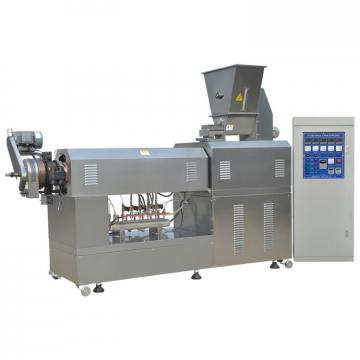 Factory Fruit and Vegetable Processing Machines/Quick Frozen Line/Food Processing Production Line for Daylily Production Line with High Output
Factory Fruit and Vegetable Processing Machines/Quick Frozen Line/Food Processing Production Line for Daylily Production Line with High Output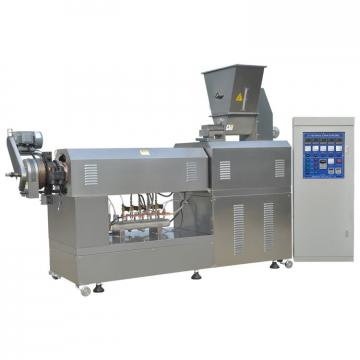 Factory Direct Sales PS Styrofoam Food Container Production Line
Factory Direct Sales PS Styrofoam Food Container Production Line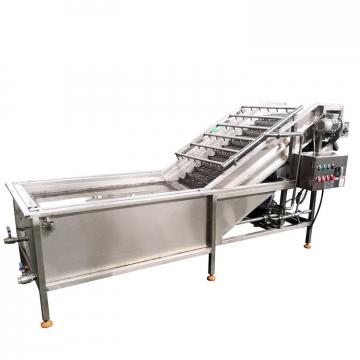 Complete Pure / Mineral Drinking Bottled Water Production Line Factory in Beverage / Food Area
Complete Pure / Mineral Drinking Bottled Water Production Line Factory in Beverage / Food Area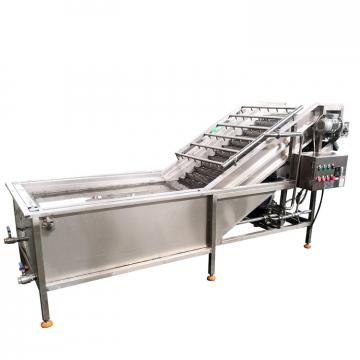 Cheetos Fried Food Production Factory Extruder Processing Line
Cheetos Fried Food Production Factory Extruder Processing Line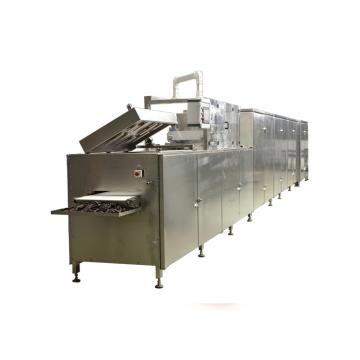 Automatic Mini Food Factory Macaroni Processing Line Pasta Production Line
Automatic Mini Food Factory Macaroni Processing Line Pasta Production Line
